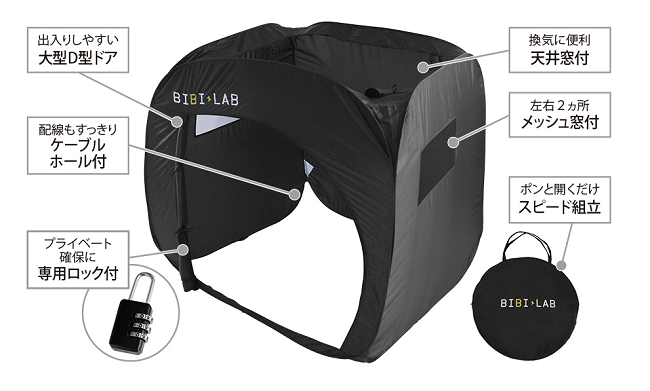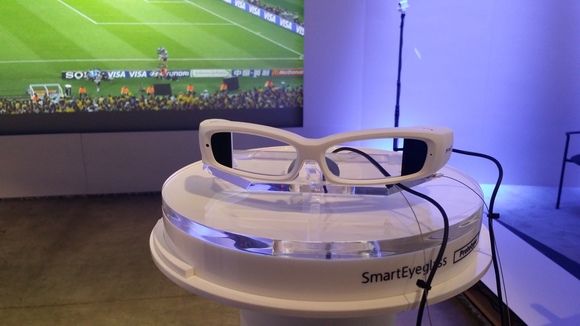The Kindle Voyage.
A look at gadget happenings, featuring Amazon’s new Kindle Voyage e-reader, Bibi Lab’s portable gaming room, and Panasonic’s new camera/phone hybrid.
Amazon’s Kindle Voyage e-reader
Easily the biggest e-reader on the market, Amazon still has to keep on its toes as other companies try to jump in on the growing market, none more so than Kobo.
While its last dedicated e-reader, the Kindle Paperwhite, has proven incredibly popular, particularly for its relative low price, now has a bigger more-expensive sibling on the market, the Voyage.
With the starting price for the Voyage in the US coming in at US$199 (€155), there’s definitely a feeling that it is a more luxury model of the Paperwhite with a matte magnesium cover and a rather clear screen of 300ppi.
In terms of other improvements, the more obvious change is that it’s their thinnest e-reader yet at 7.6mm but interestingly, an old feature has returned in the form of page-turn buttons for one-handed page turning, which was removed from the Paperwhite.
Of course the price of US$199 is without the bells and whistles of 3G and removing sponsored lock screens which costs a rather eye-watering US$289 (€225) with all versions available from October.
Bibi Lab Botchi gaming tent
As if people didn’t think hardcore gamers were introverted enough, now a Japanese designer has created a pop-up tent that will allow a gamer to create an enclosed space to cut out the outside the world.
According to Engadget, via the Japanese-language Bibi Lab site, the tent measures 1.3×1.3m and is described by its designers as the ‘ultimate gaming space’.

The Bibi Lab tent looks rather basic but claims to be intuitively designed.
From first glance, there doesn’t appear to be anything particularly remarkable about the tent, but it does claim to have a number of design features that keep airflow into and out of it regular, something needed for a gaming console or PC, as well as making sure sound doesn’t leak out of it.
Costing 5,000 yen (€36), the tent is only available in Japan at the moment but for those who find peace and quiet at home hard to come by, it might make a worthy, but expensive, shipping investment.
Panasonic’s phone/camera hybrid – Lumix CM1
Panasonic is hoping to tap into the ever-growing photo enthusiast market with a camera/smartphone hybrid, only two years after it had previously said it was to leave the smartphone market.
Known as the Lumix CM1, the Android phone will resemble a camera more than a phone at first glance with its external f/2.81 lens, built-in 1in sensor and 20MP lens far surpassing similar camera-focused phones, according to The Verge.

Seemingly however, its ability to function as a phone is up there with those of its contemporaries with its 2.3GHz processor, Android 4.4 and 16GB of storage, but again, the external camera buttons and leather back instantly strike a chord as a camera rather than a phone.
The downside is the cost of this hybrid as the price for its launch next November in France and Germany is priced, sim-free, in the region of €900.
Metal Gear Solid sweets
The rather popular Konami video game Metal Gear Solid has had a rather unusual addition to its range of merchandise this week after they showcased its range of box candy styled on the cardboard box that Snake, the lead character in the game, would use to hide in when trying to evade enemies.
The sweets were shown off at the Tokyo Games Show 2014 and came in a variety of flavours that meant people couldn’t make the joke of “What’s in that box?”, that enemies would say upon coming across Snake in his box costume in the game.
This bit of promotion is coming prior to the release of the latest game in the franchise, Metal Gear Solid V: The Phantom Pain which should be released sometime in the beginning of next year.
Although selling for 640 yen (€4.70), journalists attending the show didn’t seem to impressed with what was on offer.
Sony’s smartglasses get release date
Known as Sony SmartEyeglass, the smartglasses will be hoping to make some in-way in the market prior to Google’s launch of Glass.
Now it has given developers and customers alike a better idea of when they could expect to see the device hit the shelves after putting the SDK for the SmartEyeglass online today for them to toy with prior to a March launch.

the Smart Eyeglases on display at CES 2014.
The device was first shown off at CES 2014 in February and looked more like it wasn’t sure whether it wanted to be a pair of smartglasses or a virtual reality headset but features a host of sensors and gyroscope and a 3MP camera.
Stay informed – get daily updates on the latest happenings in technology directly to your inbox.